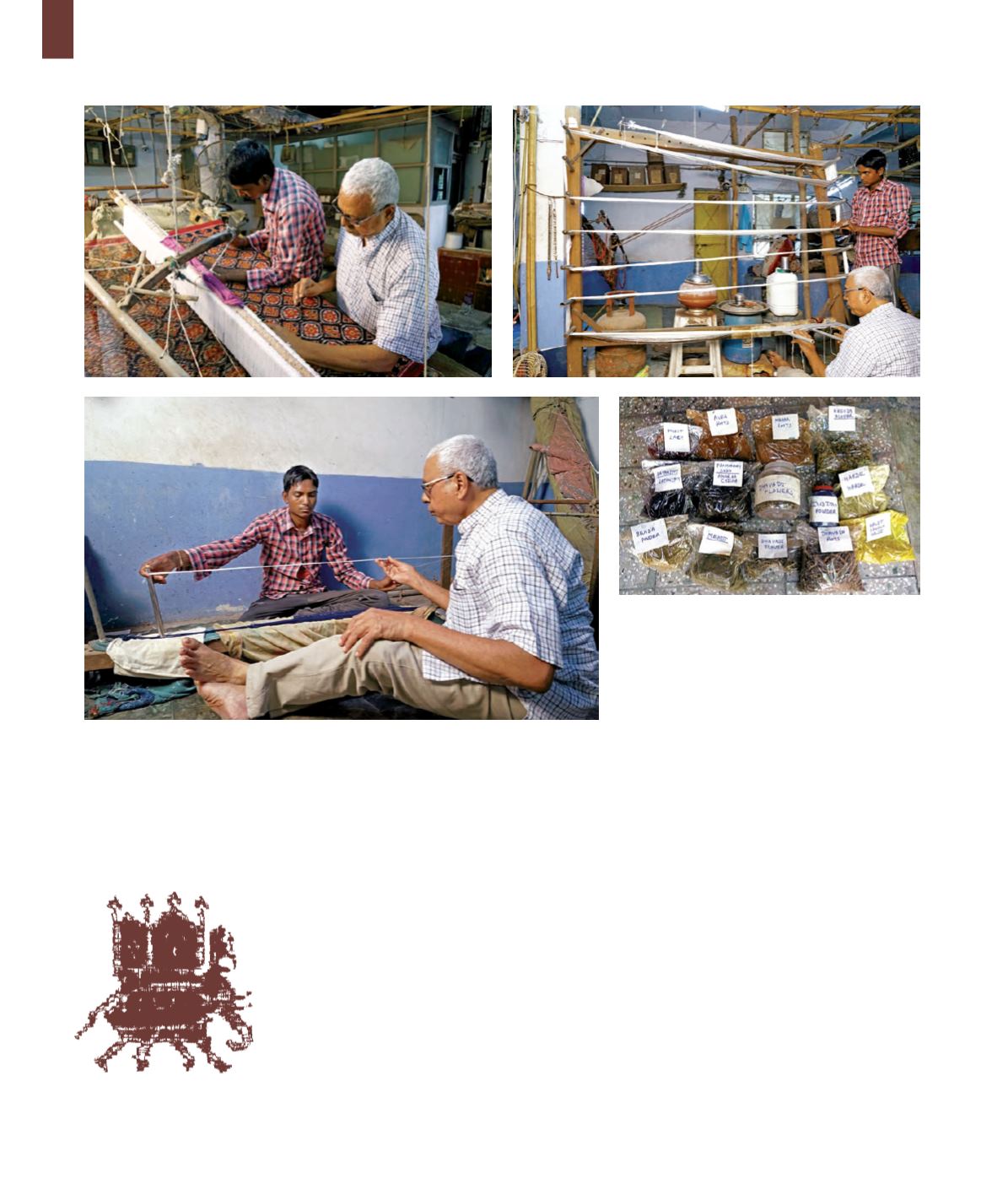
50
The Weaving Technique
Ikat weaving involves weaving with yarns that
have been resist-dyed according to the motifs
and composition decided for the textile such
as a saree, dupatta or stole. The yarns are
repeatedly tied with cotton threads and dyed to
obtain different colours in different sections of
the yarn according to the motifs and patterns
to be subsequently woven. Single-Ikat textiles
are woven with either resist-dyed warp (that is
the longitudinal yarns that run the length of
a fabric) or weft (the horizontal yarns that are
woven above and below the warp) yarns.
However, double-Ikat textiles are woven with
resist-dyed warp and weft threads, and this
technique is many times more complex and
difficult than the single-Ikat technique. To work
out double-Ikat means tying and dyeing weft
and warp yarns separately and in such a way
that when the weaver sets the warp yarns on
the loom, and weaves in the weft yarns, solid
Historical narratives tell us that the art
of weaving Patan Patola textiles is several
centuries old. In fact, there are references to
the textile in ancient religious books like the
Ramayana
and
Narsinha Purana
that mention
it was regarded as an auspicious textile and
worn during special ceremonies and weddings.
The art was patronized during the reign of
Chalukyan King Kumarpal whose queen wore
a new Patola saree every day! It is said that 700
weavers moved to Patan in the 12th century
at the behest of the king. Our community is
also inspired by Sant Kabir, the respected 15th
century mystic poet and weaver.


